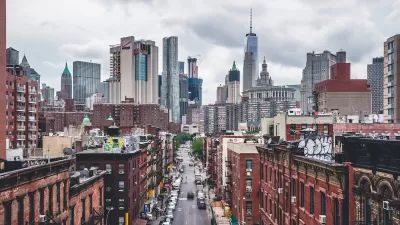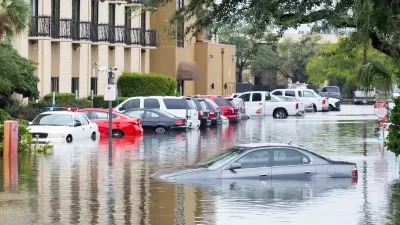Stewart M. Patrick looks at the convergence of trends in natural disasters and urbanization in the developing world and sees a dire threat to the world's urban populations growing.
Recent disastrous floods in Manila and China that have reportedly been intensified by urbanization are only a sign of things to come, writes Patrick. With 75 percent of the world predicted to live in cities by 2050, and most of the growth between now and then occurring in areas of the developing world that are "typically 'poorly planned and managed' by local authorities," many more people will be at risk of increasingly common natural disasters.
In addition, notes Patrick, "Vulnerability of urban areas to natural disasters is hardly restricted
to the developing world, of course, as the Japanese earthquake and U.S.
experience with Hurricane Katrina attest."
So what can be done to try to head off the worst effects of these converging trends? According to Patrick, "Two important steps are building local capacity to anticipate risk
levels and establishing channels through which to request resources from
state, provincial, or national governments. Another priority is
emergency response training in vulnerable cities or neighborhoods.
Finally, investing in-and publishing-threat
assessments and risk modeling is critical."
FULL STORY: Man-Made Cities and Natural Disasters: The Growing Threat

Planetizen Federal Action Tracker
A weekly monitor of how Trump’s orders and actions are impacting planners and planning in America.

Map: Where Senate Republicans Want to Sell Your Public Lands
For public land advocates, the Senate Republicans’ proposal to sell millions of acres of public land in the West is “the biggest fight of their careers.”

Restaurant Patios Were a Pandemic Win — Why Were They so Hard to Keep?
Social distancing requirements and changes in travel patterns prompted cities to pilot new uses for street and sidewalk space. Then it got complicated.

Platform Pilsner: Vancouver Transit Agency Releases... a Beer?
TransLink will receive a portion of every sale of the four-pack.

Toronto Weighs Cheaper Transit, Parking Hikes for Major Events
Special event rates would take effect during large festivals, sports games and concerts to ‘discourage driving, manage congestion and free up space for transit.”

Berlin to Consider Car-Free Zone Larger Than Manhattan
The area bound by the 22-mile Ringbahn would still allow 12 uses of a private automobile per year per person, and several other exemptions.
Urban Design for Planners 1: Software Tools
This six-course series explores essential urban design concepts using open source software and equips planners with the tools they need to participate fully in the urban design process.
Planning for Universal Design
Learn the tools for implementing Universal Design in planning regulations.
Heyer Gruel & Associates PA
JM Goldson LLC
Custer County Colorado
City of Camden Redevelopment Agency
City of Astoria
Transportation Research & Education Center (TREC) at Portland State University
Camden Redevelopment Agency
City of Claremont
Municipality of Princeton (NJ)





























